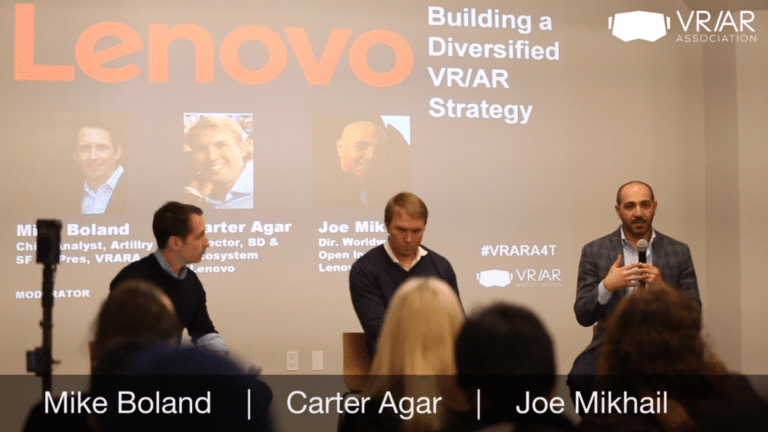
Lenovo is one company with lots of irons in the fire when it comes to VR and AR. This includes VR-ready PCs, a windows holographic headset, an enterprise AR headset and of course Tango.
We had the chance to interview the company before our recent fireside chat with Robert Scoble and Shel Israel. And it has a lot going on, with a well-formed vision about where it’s going.
At a high level, it’s all about a diversified VR/AR strategy. That’s impressive for a global hardware player, given that VR/AR could cannibalize hardware standards. It’s a classic innovator’s dilemma.
Lenovo’s Joe Mikhail asserted that despite these potential threats to current hardware standards, it’s hard to deny that VR and AR are the future… and Lenovo needs to be there.
Not only is it blitzing VR/AR, but each product maps to different opportunities. Its AR headset addresses enterprise AR, while the Windows Holographic HMD has consumer use cases.
In each case, it’s about accelerating the adoption curve by getting more devices in more people’s hands. The goal here is to seed the marketplace and bring down hardware costs.
Lenovo is meanwhile Google’s biggest partner for Tango. The depth sensing and room mapping tech fuels Lenovo’s flagship Phab2Pro, and will push AR further into users’ hands.
“Hands” is the operative word there, as both Mikhail and Lenovo’s Carter Agar believe that mobile is the nearer term AR opportunity that will scale before headsets do (we agree).
The use cases for Tango include home design and renovation… where getting an accurate read on furniture and room orientations will resonate with consumers and avoid costly mistakes.
Lenovo is also working with brands to expand the use case. Agar in fact announced a new Amazon partnership allowing users to image the perfect flat screen fit before purchasing.
The entire interview is below, with lots more insights from Mikhail and Agar about how to piece together a diversified VR/AR Strategy. Enjoy.
